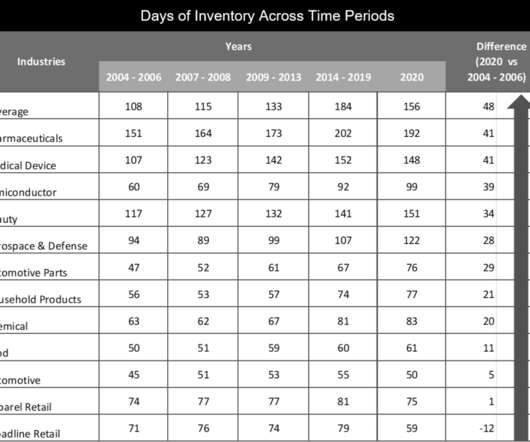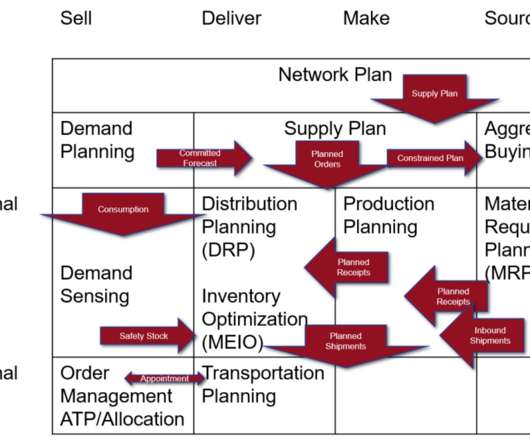How We Stubbed Our Toe in The Evolution of S&OP
Supply Chain Shaman
FEBRUARY 14, 2022
Tight coupling of the supply chain forecast to the financial forecast will improve value. Industries carried on average 32 days more inventory in 2020 than in 2007. (I I give you this evidence in this blog.). Organizations can align to drive value despite the allegiance to functional metrics. Measure it.
























Let's personalize your content